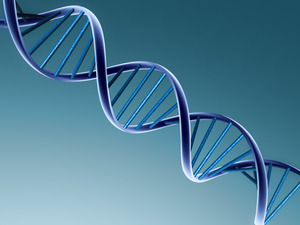Human beings are made up of cells that contain 23 sets, or pairs of chromosomes. Half of those chromosomes come from the mother and half from the father. On occasion, something happens within the cells to cause an abnormality in the number of chromosomes present; sometimes, there are too few chromosomes and other times, there are too many.
Trisomy 18 is a chromosomal disorder in which there is an extra 18th chromosomes in the body’s cells. In some cases, the third chromosome is present in all of the body’s cells, and in other cases, it is only present in part of the body’s cells. Regardless how many cells in the body are effected, Trisomy 18 is often fatal, as a matter of fact, in most pregnancies where the fetus has Trisomy 18 miscarriage or stillbirth is the result.
There are three different forms of Trisomy 18; Full Trisomy 18, Mosaic Trisomy 18 and Partial Trisomy 18. Full Trisomy 18, the most common form of this chromosomal disorder, is characterized by the presence of a third 18th chromosome in every cell of the body. Mosaic Trisomy 18 is characterized by there being a presence of a third 18th chromosome in only part of the cells. Partial Trisomy 18 is characterized by there being the presence of only part of a third 18th chromosome in the cells.
Trisomy 18, or Edward’s Syndrome can be diagnosed during pregnancy. There are specialized blood tests, known as “triple screen” or maternal serum alpha-fetoprotein, that can be done first to determine the likelihood that the baby would have the disorder. This test is now routinely offered to mothers between 15 and 20 weeks of pregnancy. It is important to know that this test can help to determine whether or not there is a chance that the baby may have Edward’s Syndrome, or another genetic disorder, it does not give a definitive result.
Ultrasound is another routine prenatal test. During an ultrasound test, the doctor can determine whether there is a risk of the baby having Trisomy 18 by looking for specific details. Often times, babies who have Trisomy 18 have either too much or too little amniotic fluid around them in the womb. They may have a two vessel umbilical cord rather than a three vessel cord. There may be abnormalities in the babies heart, kidneys, brain, or skeletal system that suggest the possibility of the disorder. Once again, this test can help determine whether or not there is a possibility of the baby having Edward’s Syndrome, it is not a definitive test.
To get definitive results, doctors need to look at the chromosomes themselves. This can be done in a couple of ways. It is important for the mother to know and understand the risks associated with these tests before having them done.
Amniocentesis, usually done anytime after 15 weeks of pregnancy, is a test in which doctors obtain a sample of the amniotic fluid around the baby. There are some of the baby’s cells naturally flowing throughout the amniotic fluid and these cells are tested for their genetic make-up. This test is performed by doctors sticking a long needle through the lower abdominal wall and into the uterus to obtain the fluid. They use an ultrasound to help guide them and the procedure takes less than a minute. This test has been known to cause miscarriage in about 1 out of every 300 pregnancies. After this procedure is completed, the doctor will give the mother very specific instructions and limitations to help decrease the chances of miscarriage. Accurate diagnosis of chromosomal disorders is very high with this test.
The other test available to get a definitive result as is called Chronic Villus Sampling. This test is usually done between 10 and 12 weeks of pregnancy and involves obtaining a sample of the tissue that is on the edge of the placenta itself. The chronic villi must be obtained from the fetal side of the placenta to obtain cells that are the same as the baby’s. To perform this test, doctor’s will use ultrasound to help them guide a needle through either the cervix or the lower abdomen and into the placenta. A small piece of the placenta is removed and used for testing. This test carries a minimal risk or miscarriage and also a small risk of causing specific types of limb defects in the baby. In about 3% of cases, this test gives difficult to understand results and amniocentesis is needed for a definitive result.
Although Edward’s Syndrome is highly fatal and most pregnancies end in miscarriage or stillbirth, there are babies born alive with the disorder. Many of these babies went through the entire pregnancy undiagnosed. In these cases, it is very common for the baby to be born with multiple health problems and physical abnormalities. Most of these babies will have to spend many hours in the neonatal intensive care unit, and many will undergo multiple surgeries. Yet, most of these babies will not live. Approximately 40% of newborns that have Trisomy 18 will survive their first week of life. That means that 60% will not survive. By the age of one month, only 20% of all babies born with Trisomy 18 will survive, leaving 80% that have not survived. At six months of age only 6% will survive. Only about 5% of all babies born with Trisomy 18, or Edward’s Syndrome will live to see their first birthday. For those babies who are born with either Mosaic or Partial Trisomy 18, the numbers are slightly higher, but the outlook is still grim. Those that do survive past their first year of life will likely have many health issues and physical abnormalities.
There is no cure for Edward’s Syndrome, or Trisomy 18. The effects it will have on a baby who is diagnosed with it vary greatly from one to another. Many babies are born, seemingly healthy, and die unexpectedly due to undiagnosed cases of Trisomy 18. In these cases, there is never a definitive answer because chromosomal testing cannot be done accurately. Some babies are born with multiple health problems and/or physical abnormalities and do not live long enough to be diagnosed. Yet, others, having been diagnosed, suffer only mild problems and manage to live beyond their first birthday. There is no way of knowing how Trisomy 18 will effect the baby until the baby is born.
Sources for this article include:
http://www.trisomy18.org
http://www.novelguide.com
http://children.webmd.com/trisomy-18-syndrome




